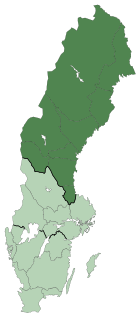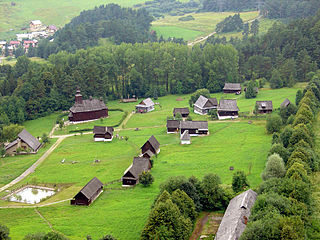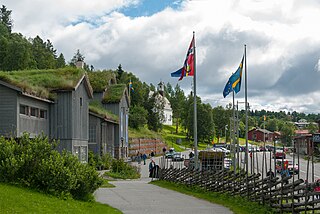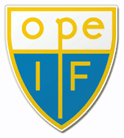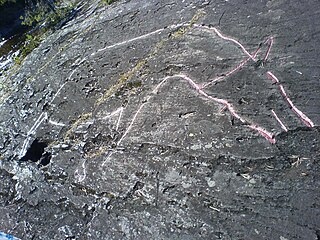Coordinates: 63°11′16″N14°38′13″E / 63.18777°N 14.63683°E

A geographic coordinate system is a coordinate system that enables every location on Earth to be specified by a set of numbers, letters or symbols. The coordinates are often chosen such that one of the numbers represents a vertical position and two or three of the numbers represent a horizontal position; alternatively, a geographic position may be expressed in a combined three-dimensional Cartesian vector. A common choice of coordinates is latitude, longitude and elevation. To specify a location on a plane requires a map projection.
Contents

inspired by characteristic feature in 18th century church architecture in Jämtland
Jamtli is the name of the regional museum of Jämtland and Härjedalen in Östersund, Sweden. It consists of an open-air museum with historical buildings, and an indoor museum with both permanent and temporary exhibitions. “Jamtli” literally means “hillside of Jämtland” in the local dialect. Since the 1980s, the museum has been working with living history in a project entitled Jamtli Historyland. This venture has contributed to make the museum one of the most popular tourist attractions in the region. [1]

Jämtland is a historical province in the centre of Sweden in northern Europe. It borders Härjedalen and Medelpad to the south, Ångermanland to the east, Lapland to the north and Trøndelag and Norway to the west. Jämtland covers an area of 34,009 square kilometres, 8.3% of Sweden's total area and is the second largest province in Sweden. It has a population of 115,331, the majority of whom live in Storsjöbygden, the area surrounding lake Storsjön. Östersund is Jämtland's only city and is the 24th most populous city in Sweden.
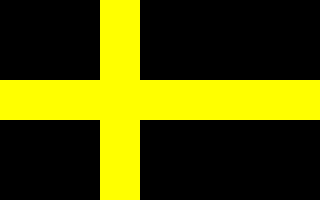
Härjedalen is a historical province or landskap in the centre of Sweden. It borders the country of Norway as well as the provinces of Dalarna, Hälsingland, Medelpad, and Jämtland. The province originally belonged to Norway, but was ceded to Sweden in the Treaty of Brömsebro, 1645.

Östersund is an urban area (city) in Jämtland in the middle of Sweden. It is the seat of Östersund Municipality and the capital of Jämtland County. Östersund is located at the shores of Sweden's fifth largest lake, Storsjön, opposite the island Frösön, and is the only city in Jämtland. Östersund is the region's cultural and economical centre and by tradition a city of trade and commerce. Östersund had one of the most extensive garrisons in Sweden prior to its closure in the early-21st century. The city is the Mid Sweden University's largest campus site with approximately 7,000 students. With a total population of 50,960 (2017) Östersund is the 22nd most populous city in Sweden, the 46th most populous city in Scandinavia, and by far the largest inland city in Northern Sweden.





